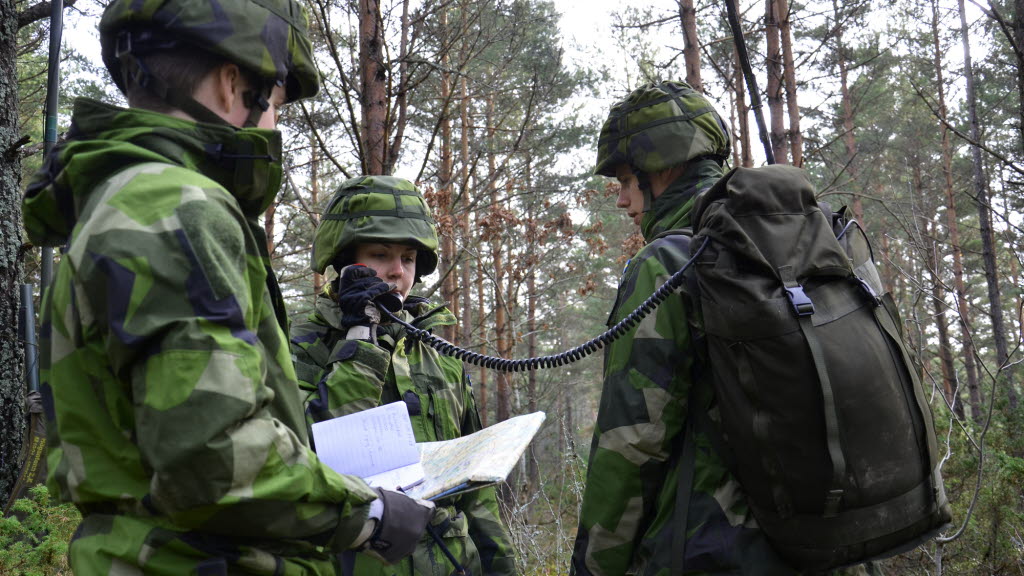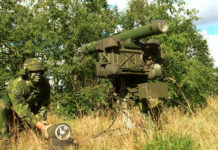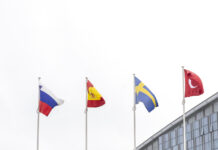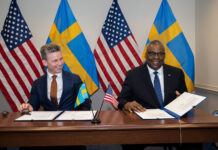According to the Commander of the Swedish Army, Major General Karl Engelbrektson, the war in Ukraine underlines the importance of forces on the ground. In response to the threat to his country, he has been ordered by the Government to build up a total of four army brigades, a battle group on Gotland as well as a divisional command, Engelbrektson told some 300 participants in a live demonstration of various shoulder-launched weapons from Swedish manufacturer Saab at the Swedish Armed Forces’ Land Warfare Centre in Kvarnin May.
“We are not threatening anyone,” the general stressed. The point, he said, was to be able to defend Sweden’s entire own territory against a sophisticated adversary. Engelbrektsonpointed out that when he joined the Army several decades ago, the Swedish armed forces had 36 brigades and a wartime strength of 850,000 soldiers.
Following the Russian invasion of Ukraine, the two non-NATO countries Finland and Sweden are currently discussing joining the defence alliance. The majority of the population in both countries now seems to be in favour of joining, after such a step was considered highly unlikely just a few months ago. Observers assume that a political decision could be made soon. At the same time, Russia is threatening both countries with consequences if they join.
According to Engelbrektson, the Government’s requirements virtually mean doubling the size of the Army within ten years. “For the first time in my career, I do not see money as the problem,” the general said. In doing so, he said, the Government has even gone beyond the wishes of the military, which had originally asked for only three brigades, two battle groups and a divisional command.
Role of the Swedish Army
The restructuring of the forces is also about creating command suitable zo integrate allies. Moreover, Anti-Access Aerial Denial (A2/AD) capacities of the brigades would have to be created. According to the plans, these brigades should have their own artillery, air defence and engineers. This ranges from air defence with a range of about 70 kilometres, to rocket artillery with ranges up to 150 and 300 kilometres, Engelbrektson explained.
In this context, he spoke of mobile “protective shields or protective bubbles” that the brigades should set up to defend themselves against an enemy. In each bubble, according to the officer, sensors should be optimally connected with effectors. One goal is to fight the armoured enemy “beyond the line of sight”. It is important to procure new weapon systems with training and simulators together and to ensure that the simulators can reproduce real ballistic effects, says Engelbrektson. Even if this sometimes means equipping fewer weapon systems. This is because training and exercises are sometimes undervalued in the procurement process, he stressed.
New Equipment
The general places another focus of his work on the topic of camouflage – both in terms of equipment and training. Those who camouflage better win the battle because they can act faster in the so-called OODA loop – meaning a military decision loop in which information is processed and translated into concrete military actions – while the enemy is still hesitating. Apparently with an eye on Saab, the manufacturer of the multispectral Barracuda camouflage solutions, Engelbrektson demanded that the latest camouflage technology should not be openly displayed so as not to allow an opponent to draw conclusions about one’s own capabilities. The general also sees a need to catch up in the use of drones. Sweden needs to make faster progress in this area.
Engelbrektson draws the conclusion from the Ukraine war that, in the end, it is the capacities of industry that matter in order to win. In Sweden, he says, there is close cooperation between the army and the procurement agency FMV, which is informed precisely about the needs. Unfortunately, they now see that many of their own systems are now “combat proven”.











